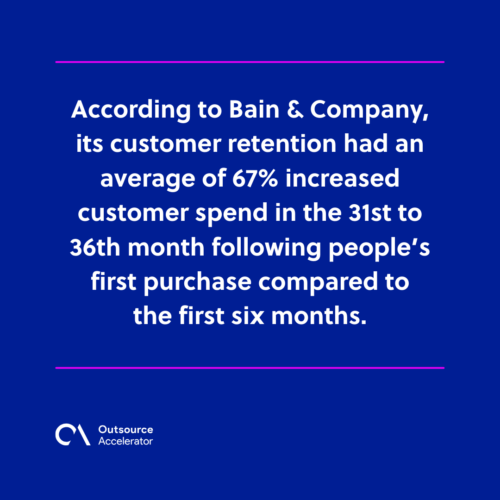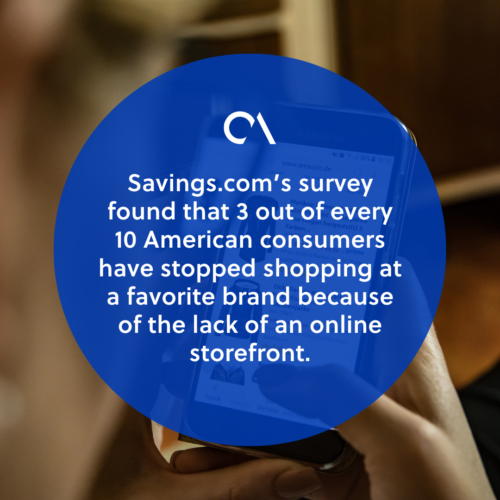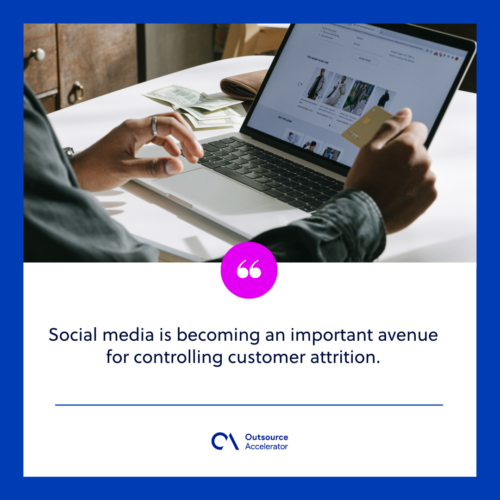Crucial customer retention statistics to know in 2025

Customer retention remains a crucial goal for marketers everywhere. Aside from capturing new clients, retaining existing ones ensures that a business survives and grows.
It’s not enough to attract new customers, it’s also imperative to keep them loyal to your products and services. An effective customer retention strategy is also a surefire way to facilitate business growth.
Satisfied customers not only become loyal to your business, but they can also act as brand ambassadors. They will promote your products and services to their respective circles, allowing you to access new customers at a significantly lower cost.
To put the value of brand loyalty in perspective, here are the customer retention statistics you should know in 2024.
Customer retention statistics across different industries
Statista’s research on customer retention revealed:
- Customers in the media and professional services space enjoy the highest customer retention rates at 84%.
- This is followed by the automotive and transport sectors and the insurance industry (83%), information technology (81%), construction and engineering (80%), and finance and telecommunications sectors (87%).
- The hospitality, travel, and restaurants see the lowest customer retention levels at 55%.
According to Bain & Company, its customer retention had an average of 67% increased customer spend in the 31st to 36th month following people’s first purchase compared to the first six months.

Gitnux’s 2021 study showed in the tech and electronics industry, Apple continues to have the most loyal customers. 92.6% of iPhone users plan to stay with the brand for their next smartphone. This is higher compared to Samsung users, with 74.6% brand loyalty.
CustomerGauge found that across different industries, about 44% of business doesn’t monitor or compute their retention rates.
In the software-as-a-service (SaaS) space, a net revenue churn of over 2% every month indicates an internal fault, often in the CX and delivery spaces.
Grand View Research states that the loyalty management market is a rapidly growing industry. It has a compound annual growth rate of 12.3% and is expected to reach $17.65 billion by 2028.
How customer experience and opinion shape retention
Deloitte disclosed that companies prioritizing building a good customer experience were 60% more profitable than their non-customer-centric competitors. One key factor in being a customer-centric company is to create a positive customer experience as an integral part of the full value chain.
Meanwhile, PWC’s statistics showed about three-fourths (73%) of clients associate good customer experience (CX) in establishing brand loyalty.
Most companies tend to underestimate the losses from poor customer service. However, in the US, customers switching brands costs businesses about $75 billion to $1.6 trillion per year.
According to Midlands Technical College, these massive losses stem from different factors such as:
- Cost-cutting strategies
- A gap in customer preferences
- Sacrificing CX for company growth
- Dehumanization of customer service
Below, we have gathered customer retention statistics connected to customer experience:
- PR News Wire also discovered that 68% of customers point to feeling unappreciated as the leading reason to switch brands.
- A separate study from American Express showed that 68% of customers see the service representative as a key element in a good customer experience.
- In a PWC survey, over half of respondents (54%) survey believe that companies need to do better in terms of delivering quality customer experience.
- Mckensy’s study showed that an effectively organized and managed CX strategy can lead to a 20% improvement in customer satisfaction ratings. It also creates a 15% sales conversion increase, a reduction of 30% in costs-to-serve, and an additional 30% in employee engagement ratings.
- According to Gallup, employees who feel engaged in the workplace are more driven, sustaining better customer relations. Companies with highly engaged workers enjoy 20% higher sales. The same companies outperform their respective competitors by up to 147%.
- LiveAgent’s survey revealed only 8% of customers agreed with the brands they were asked about regarding excellent customer service. On the other hand, 80% of the same brands believed that they delivered, showing a disconnect between business and customer perspectives.
- A consumer survey from Accenture showed that about 48% of customers left a company website and bought an item somewhere else because of negative customer experience.
- In another PR News Wire research, 81% of companies see customer experience as a crucial competitive differentiator.
- As per Zippia, in 2020, 60% of US customers returned to a brand after a positive customer experience. This is slightly lower than 68% in 2017 and 66% in 2018.
Customer retention statistics: Brand loyalty
Take a look at these essential customer retention statistics pertaining to brand loyalty:
- Smallbizgenius statistics revealed that 65% of a company’s overall revenue stems from repeat customers, stressing the need to pursue customer retention efforts actively.
- 82% of business leaders believe customer retention is more cost-effective than acquiring new customers. This is according to Econsultancy’s recent market research.
- Bain & Company’s study also showed that a 5% increase in customer retention volume could drive profits up to 75%.
- Microsoft stressed that all businesses depend on customer relationships. A small increase in brand loyalty (7%) can translate to a customer lifetime value (CLV) of up to 85% or greater. As clients prefer your company, your pressure to acquire new clients significantly decreases.
- To support this, a retail CX evaluation showed that 77% of consumers retain brand loyalty with their favorite brands for ten years or more. This includes 60% of millennials.
- 37% of respondents believe that brand loyalty is established when a customer purchases five times from the same brand, while 33% only believes it takes three transactions.
What makes customers loyal to a brand?
According to these customer retention statistics, consumers become loyal patrons because of the following reasons:
Online storefront
Savings.com’s survey found that 3 out of every 10 American consumers have stopped shopping at a favorite brand because of the lack of an online storefront. Roughly the same number of clients stopped because of poor online user experience.
On average, companies have a 60 to 70% chance of re-selling to an existing customer. This significantly differs from selling to new customers, with success rates as low as 5% to 20%.

Excellent customer service
Companies with great customer service enjoy brand retention, even at slightly higher prices. American Express notes that American customers are willing to pay up to 17% more for products and services from brands that offer a great customer experience.
Reward schemes
Similarly, over 70% of consumers in the United States belong to at least one active reward scheme. This illustrates the effectiveness of reward schemes and how incentivizing brand loyalty encourages repeat purchases.
A different study from Smallbizgenius shows three-fourths (75%) of respondents prefer companies with active reward programs.
Omnichannel customer experience
A 2019 statistics report on marketing statistics revealed that enlisting marketers with omnichannel capabilities can drive customer retention rates by 90% compared to those that only use a single channel.
This makes outsourced omnichannel marketing an increasingly popular trend in the BPO industry.
Customer retention and churn rates
Ideal churn rates should be 5% or below. Once it exceeds 10%, you should re-evaluate your customer retention strategies.
Small Business says businesses lose about 10 to 25% of their customer base each year.
Churn is a naturally occurring part of any business. About half of customers normally churn in a span of five years. However, only 1 out of 26 dissatisfied customers complain. The rest simply switches to a different brand.
CallMiner reports that average avoidable churn costs US businesses about $136 billion every year.
The following are the common reasons customers churn:
- Social media is becoming an important avenue for controlling customer attrition. Gartner found that failure to respond to social media inquiries was the main reason for up to 15% churn rates.
- A study by Harvard Business Review shows that short tutorials on product features can help reduce churn by up to 6%.
- Vonage found that following a negative customer experience, 58% of customers won’t return to the same brand.

Leverage customer retention statistics for business growth
The customer retention statistics listed above are taken from across various industries and business sizes.
By evaluating the best practices available, you can provide the best customer experience available and build their loyalty toward your products and services.
Securing loyal customers ensures a steady revenue stream for your business, putting you in an advantageous position for survival and eventual growth.
To help you get started, here are some of the best customer retention strategies you can consider for your business.
To ensure seamless implementation, Catalyst BPX‘s customer support team is ready to assist you every step of the way!







 Independent
Independent




